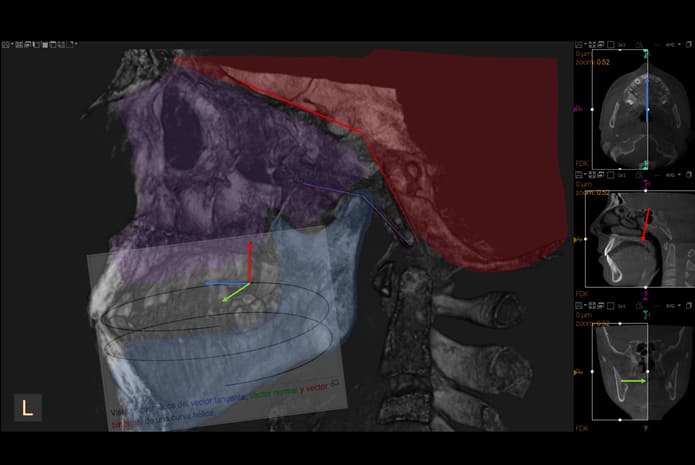Resumen
El objetivo de este artículo es describir la interacción de las diferentes acciones del vector gravitatorio (VG) y proporcionar al lector la capacidad para conocer cómo puede afectar al sistema estomatognático.
Respirar, deglutir, masticar y hablar son cuatro funciones fisiológicas que se ven afectadas por el VG, y las cuatro comparten los mismos puntos de contacto: los interproximales. El componente anterior de fuerzas tiene una influencia directa en la guía anterior, la forma de la arcada o la curva de Spee. La influencia está dirigida por el crecimiento y desarrollo del neurocráneo y cómo afecta el funcionamiento y el movimiento del viscerocráneo.
La idea clásica sobre el equilibrio de la oclusión, sin tener en cuenta a la gravedad, se renueva con las nuevas tecnologías, con conceptos como la estabilidad, el movimiento de la máxima intercuspidación, los polígonos de sustentación, el control postural o los movimientos de oscilación periódica.
Palabras clave: contactos interproximales, componente anterior de fuerzas, control postural, estabilidad, oclusión.
Abstract
The objective of this article is to describe the interaction of the different actions of the gravitational vector (VG) and provide the reader with the ability to know how it can affect the stomatognathic system.
Breathing, swallowing, chewing and speaking are four physiological functions that are affected by GV and all four share the same contact points: the interproximal ones. The anterior component of forces has a direct influence on anterior guidance, arch shape, or curve of Spee. The influence is directed by the growth and development of the neurocranium and how it affects the functioning and movement of the viscerocranium.
The classic idea about the balance of occlusion without taking gravity into account, with new technologies is renewed with concepts such as stability, the movement of the maximum intercuspation, the support polygons, postural control or periodic oscillation movements.
Keywords: interproximal contacts, anterior component of forces, postural control, stability, occlusion.





